Jaeger-LeCoultre Master Grande Tradition Tourbillon Cylindrique: Excellence In Tourbillon Chronometry
by Tim Mosso
Social media has a short attention span and no patience for nuance. That’s why the Jaeger-LeCoultre Master Grande Tradition Tourbillon Cylindrique is unlikely to interrupt your Instagram hit parade of interchangeable steel sports watches. Unplug for a minute and realize what the metaverse is missing; quality and algorithms don’t always mix.
The Jérôme Lambert era of JLC spanned 2002 to 2013, and the French-born CEO revolutionized the company’s product portfolio. Not since the late 1800s had the firm dedicated itself so completely to high-complication development and large-scale complicated watch production.
While the Lambert epoch was rife with technical milestones and outstanding-value-for-the-money complicated watchmaking, the universal weakness of the complication pieces was their thickness. Large cases were necessary to house modular complications built on simple bases, and many of the same basic case designs were shared interchangeably between dress watches and sports watches.
The design department’s course correction began with 2011’s Master Ultra Thin Moon and gradually expanded across the Master Ultra Thin and Master collections. By 2013, the lush Master Grande Tradition series began to benefit from the marque’s aesthetic triage campaign.
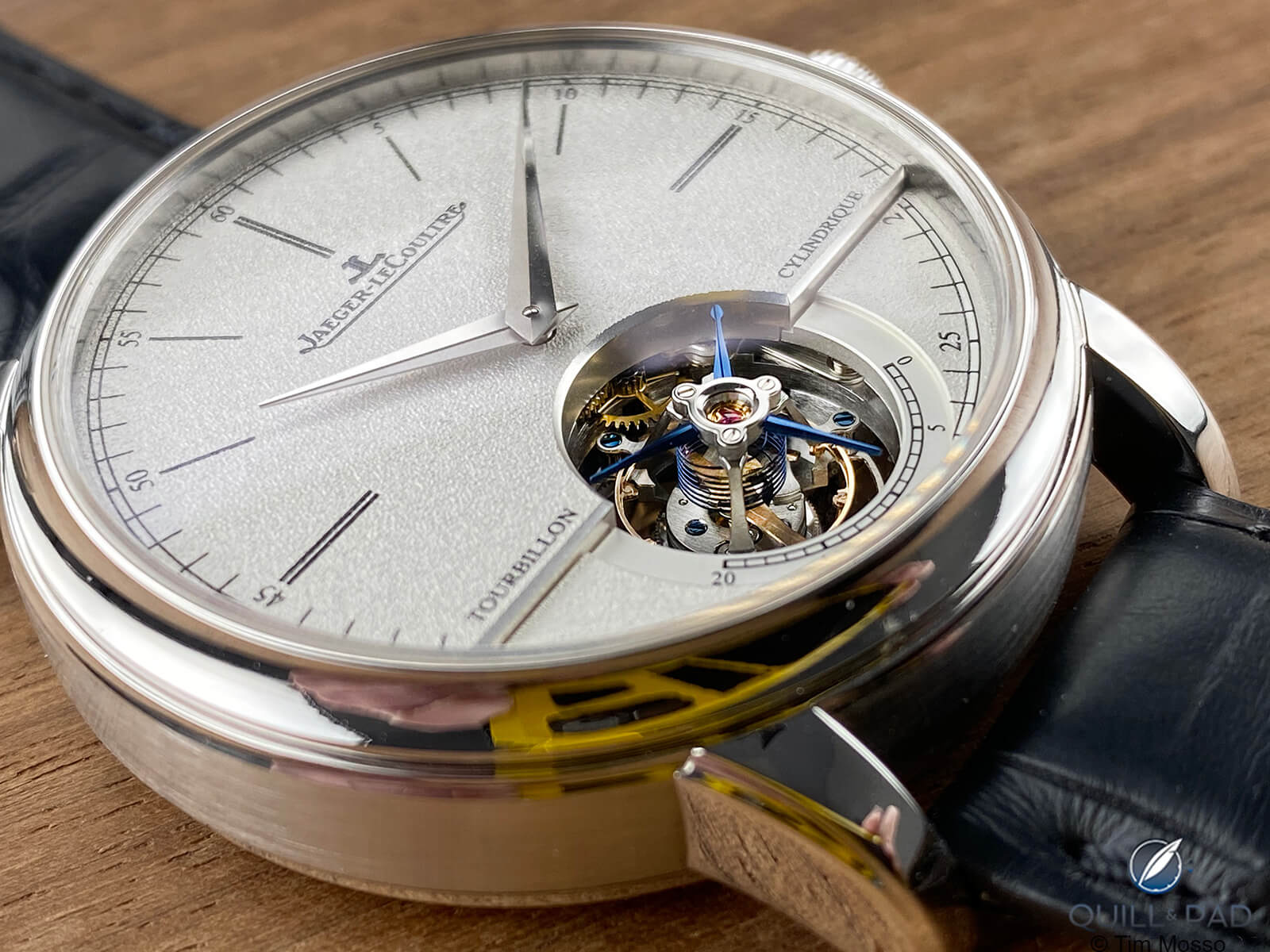
Jaeger-LeCoultre Master Grande Tradition Tourbillon Cylindrique
Cylindrical hairsprings and more elegance
JLC launched its cylindrical hairspring tourbillon regulator within 2013’s agonizingly monikered Jaeger-LeCoultre Master Grande Tradition Tourbillon Cylindrique à Quantième Perpétuel. In 2016, the “Grande Maison” stripped away the calendar system and delivered an elegance lacking in the original model. At 42 mm in platinum, the Master Grande Tradition Tourbillon Cylindrique (MGTTC) is a celebration of chronometry and optical balance.
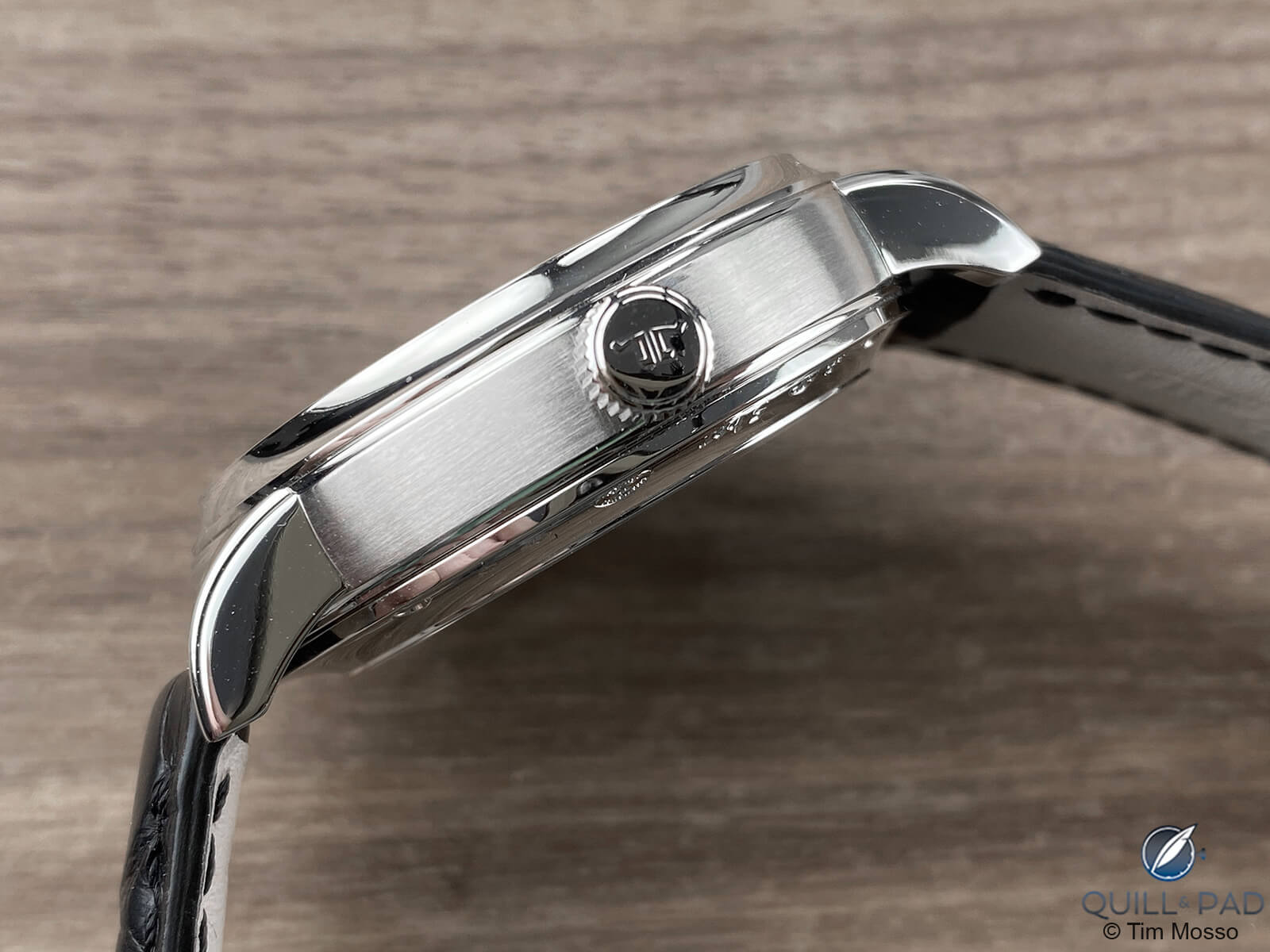
Crown and case band of the Jaeger-LeCoultre Master Grande Tradition Tourbillon Cylindrique
The case design is sweeter and softer than the brutalist JLC Master Tourbillon that preceded it. With tapered and fluted lugs, a concave bezel, and judicious use of contrasting case finish, the MGTTC exudes genuine elegance. The massive integrated “horns” of previous JLC tourbillons are supplanted by an elegant quartet of stepped lugs that would appear at home on a Vacheron Constantin timepiece. This watch is as much a testament to the firm’s evolving grasp of case construction as it is a reckoning with past design flaws.
From some angles, it appears that JLC may have borrowed notes from its Richemont stablemate Lange, but who can object when the result is this good?
At 42 mm in diameter, the MGTTC is a dress tourbillon of the modern era. Once upon a time, tourbillon wristwatches such as the 33.5 mm Patek Philippe Reference 3939 would abide by longstanding notions of modesty and banish a tourbillon to the case back of a compact container.
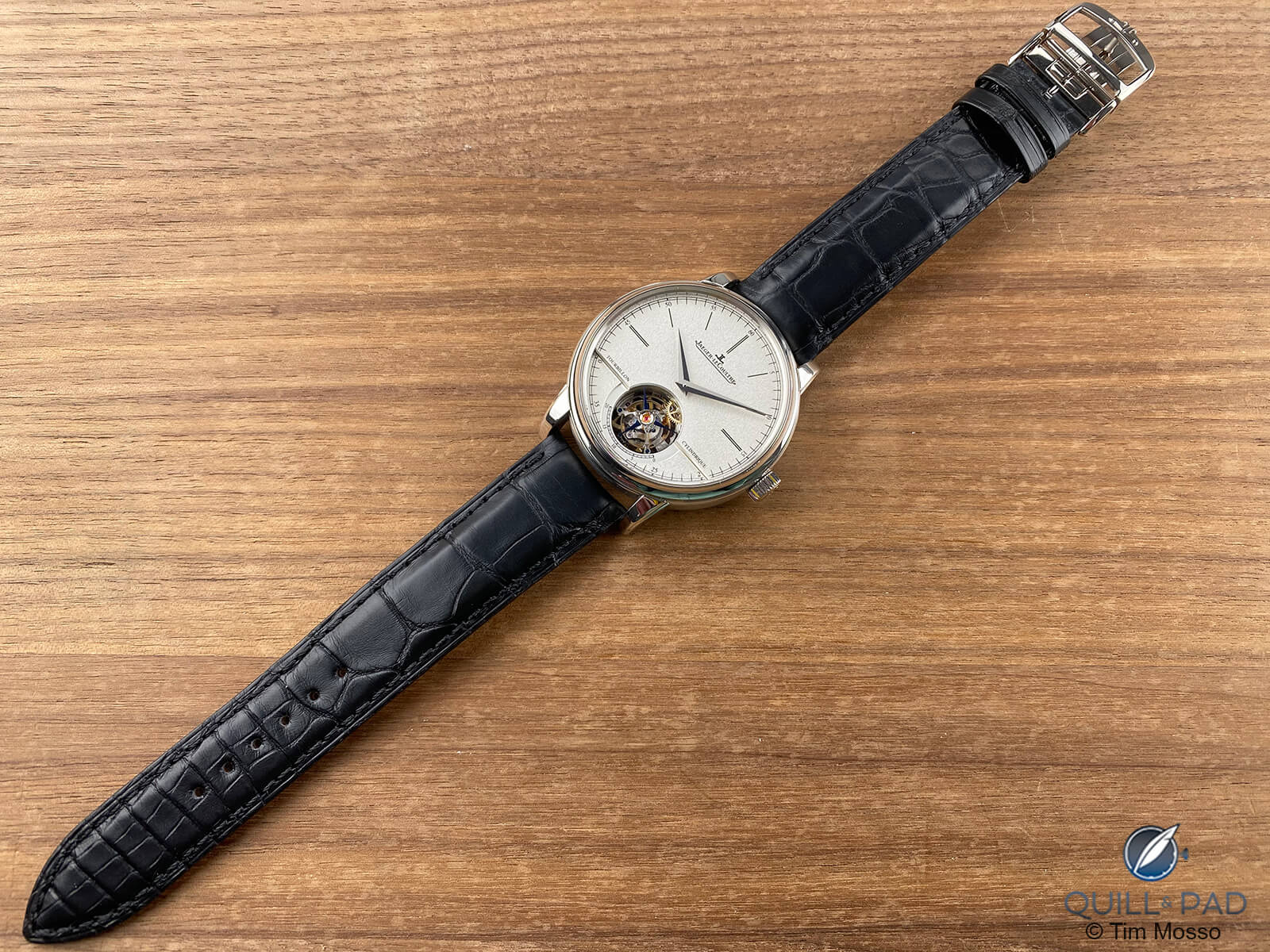
Jaeger-LeCoultre Master Grande Tradition Tourbillon Cylindrique
As with most tourbillon wristwatches since Audemars Piguet’s 1986 Maurice Grimm-designed Tourbillon Automatique, the MGTTC prominently parks its signature feature on the dial. For good measure, a stepped tier at 6 o’clock reveals the entirety of the flying tourbillon cage and its precious cargo. That said, this tourbillon’s peacock factor shares billing with its genuine horological value.
Cylindrical hairsprings with twin overcoils were a common feature of marine chronometers in the pre-GPS era of maritime navigation. In terms of consistency, an overcoil hairspring enjoys superior mass centering over a flat hairspring, and a double-curve cylindrical hairspring better centers its mass than an overcoil.
The complexity of fabricating a cylinder from hairspring steel limited the manufacture of such regulators to experts, and the sheer volume of such a spring limited its use to large timekeepers. In the modern era, Jaeger-LeCoultre has scaled the cylindrical hairspring to a size that fits within the tourbillon cage of a wristwatch, but the coil retains all of its advantages from the era of navigation clocks.
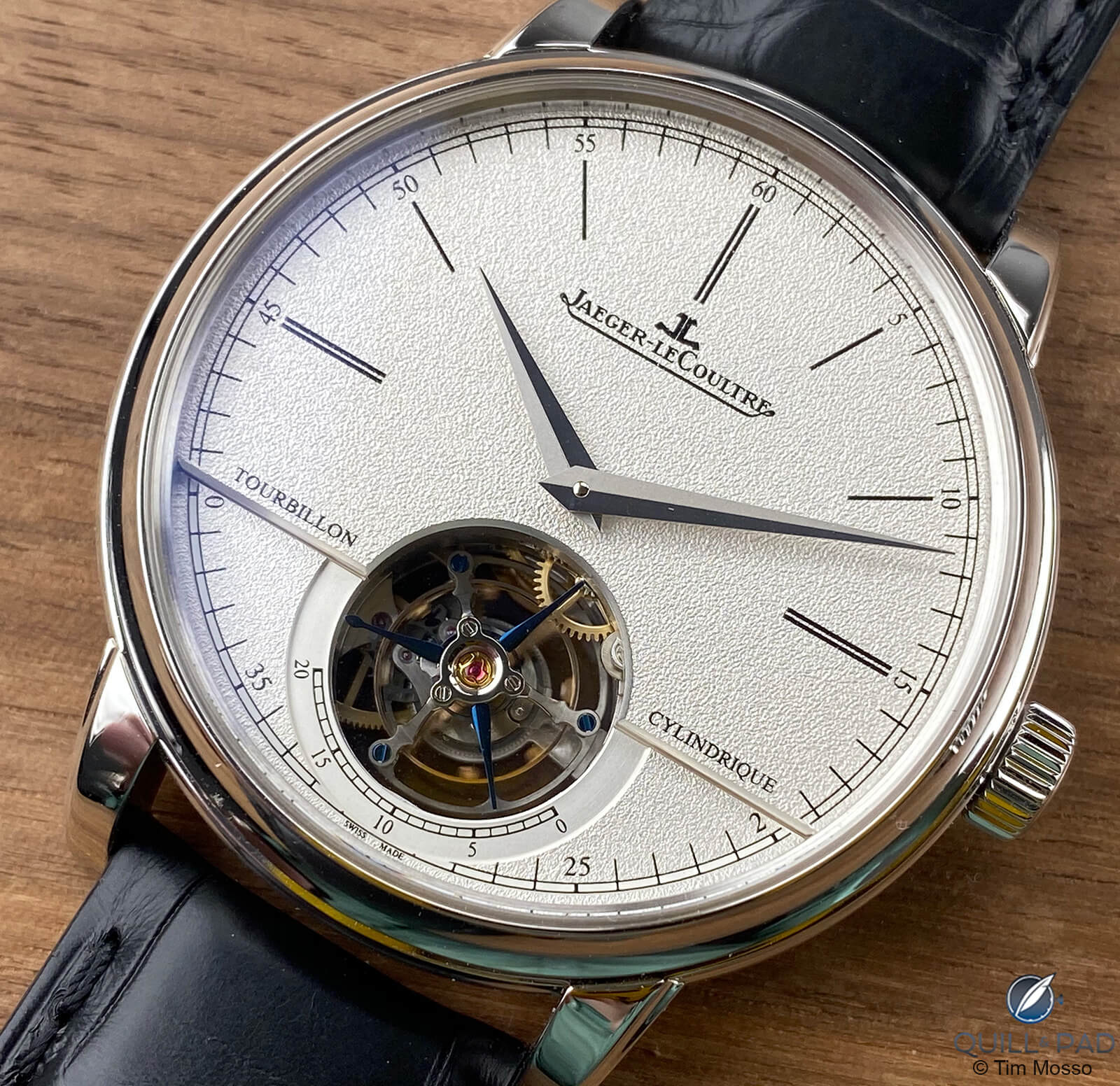
Jaeger-LeCoultre Master Grande Tradition Tourbillon Cylindrique
JLC’s dial-side tourbillon is easily the best-finished subassembly of Caliber 995.
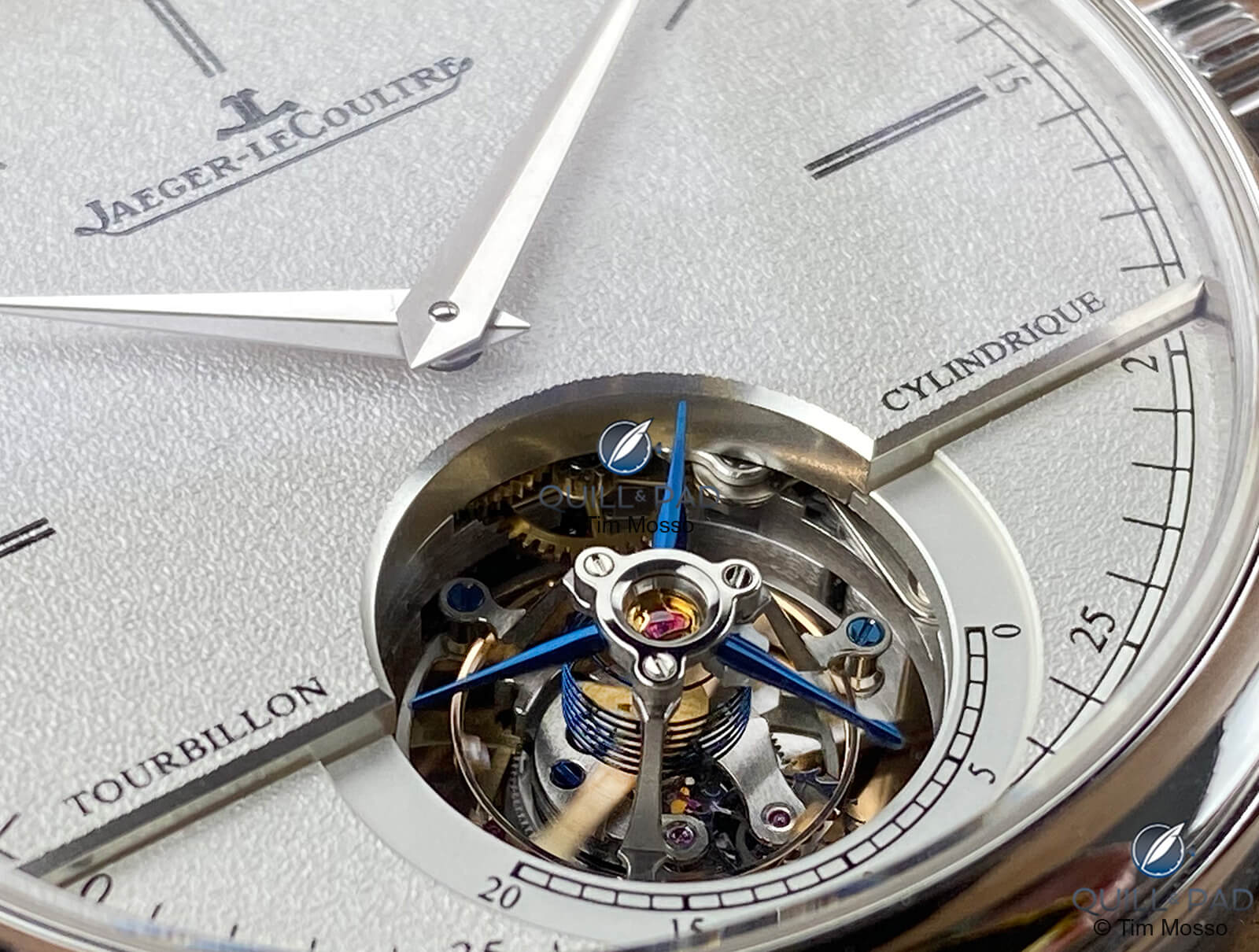
Jaeger-LeCoultre Master Grande Tradition Tourbillon Cylindrique
Each element of the tourbillon cage is carefully detailed and jewel-like. The core structural components are of titanium construction, and this fact makes those satin and mirrored embellishments all the more impressive. Polished and tempered blue screws exist in close enough proximity to play up their contrast. The top of the tourbillon cage is black-polished. Underlying bridges for the escapement reflect lavish attention from slow hands.
Jaeger-LeCoultre Master Grande Tradition Tourbillon Cylindrique: visuals
Coarsely-grained dials became a signature of Jaeger-LeCoultre product design in the 2010s, and this tourbillon boasts a superb example. More fluffy white than metallic silver, this winter wonderland leaves no doubt that elegance was the order of the day in the design department. A pair of half-frosted dauphine hands aid both aesthetics and legibility. The flying tourbillon itself acts as the display of seconds.
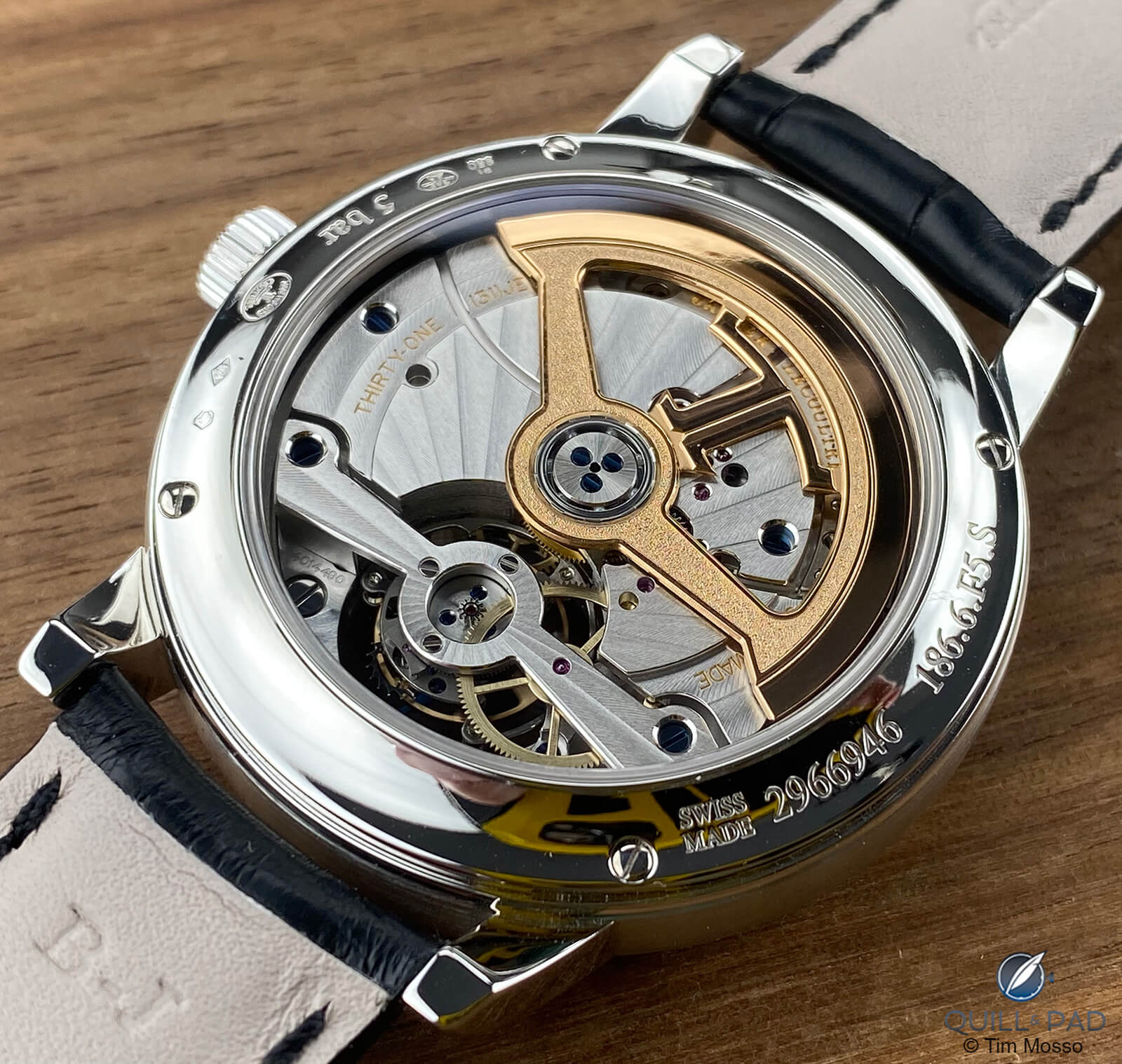
View through the display back of the Jaeger-LeCoultre Master Grande Tradition Tourbillon Cylindrique
The reverse side of the automatic movement is workmanlike and acceptably clean given the 2016 retail price of $102,000. It bears JLC’s signature combination of hand- and mechanical finishing in tandem. This is done for practical reasons: JLC takes pride in offering fine watchmaking for a fraction of Greubel Forsey prices. Radiant côtes de soleil expand outward from the underside of the tourbillon mount, and the triple-finished pink gold rotor is attractive.
The automatic winding system of Caliber 995 energizes a 48-hour power reserve. Current-day JLC universally employs unidirectional winding systems for the sake of efficiency, and this one enlists ceramic rotor bearings for reduced friction and maintenance requirements.
The tourbillon regulator is free sprung for precision of adjustment and durability. A frequency of 28,800 (4 Hz) is somewhat higher than the 2.5 –3 Hz often employed for aesthetic reasons by other brands, but the high beat rate makes sense in light of JLC’s focus on chronometry with its tourbillon timepieces.
As with all Jaeger-LeCoultre tourbillon timepieces, Caliber 995 underwent the Master 1,000-Hour Test of durability and chronometry prior to leaving the manufacture.
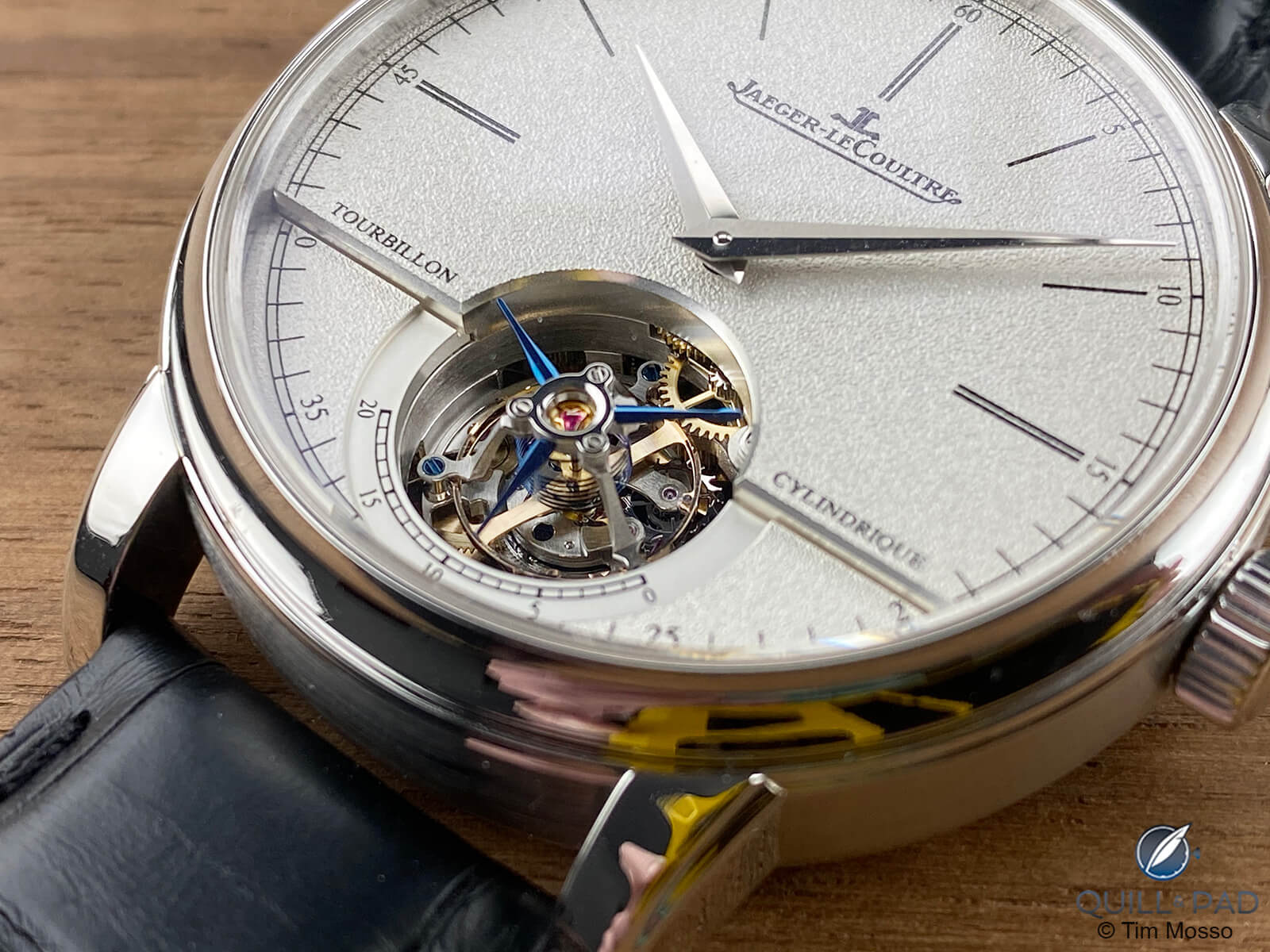
Jaeger-LeCoultre Master Grande Tradition Tourbillon Cylindrique
Jaeger-LeCoultre has a long history of excellence in tourbillon chronometry. Caliber 170 of the mid-twentieth century was a star in chronometry trials during the 1940s and 1950s. In 2009, Caliber 978, JLC’s first automatic tourbillon caliber, duplicated this feat in the Musée d’Horlogerie du Locle’s Concours International de Chronométrie, a timing trial often cited as the first such competition to be held in Switzerland since the 1970s. Against a field that included haute horlogerie independent brands, a gaggle of purpose-built twentieth-century trial calibers, and JLC’s own Gyrotourbillon 2, automatic Caliber 978 prevailed with an annualized timing deviation of 47 seconds gained.
Why emphasize the exploits of Caliber 978? Because Caliber 995 is that movement with a flying tourbillon and a superior hairspring architecture. The MGTTC is the heir to a grand tradition at one of the great houses in Swiss horology.
Instagram won’t care, regardless.
But when was the last time a Tiffany-teal Patek Philippe Nautilus won a chronometry trial?
For more information, please visit www.jaeger-lecoultre.com/us-en/watches/master-grande-tradition.
Quick Facts Jaeger-LeCoultre Master Grande Tradition Tourbillon Cylindrique
Case: 42 x 13.4 mm, platinum, water resistance of 50 meters
Dial: white, grained texture, stepped to reveal tourbillon structure, dauphine hands
Movement: automatic Caliber 995 with one-minute tourbillon with free-sprung cylindrical hairspring, 31 jewels, 48-hour power reserve, 4 Hz / 28,800 frequency
Functions: hours, minutes, seconds on tourbillon
Band: alligator and calf leather strap with white gold double-deployant clasp
2016 retail price: $102,000
* Tim Mosso is the media director and a watch specialist at Watchbox.
You may also enjoy:
My Top 5 Favorite Watches With Helical Hairsprings.
Jaeger-LeCoultre Reverso Tribute Minute Repeater: A Truly Fitting Tribute
Jaeger-LeCoultre Rendez-Vous Star And Dazzling Star: Ingenious, Yet Romantic, Complications



Leave a Reply
Want to join the discussion?Feel free to contribute!